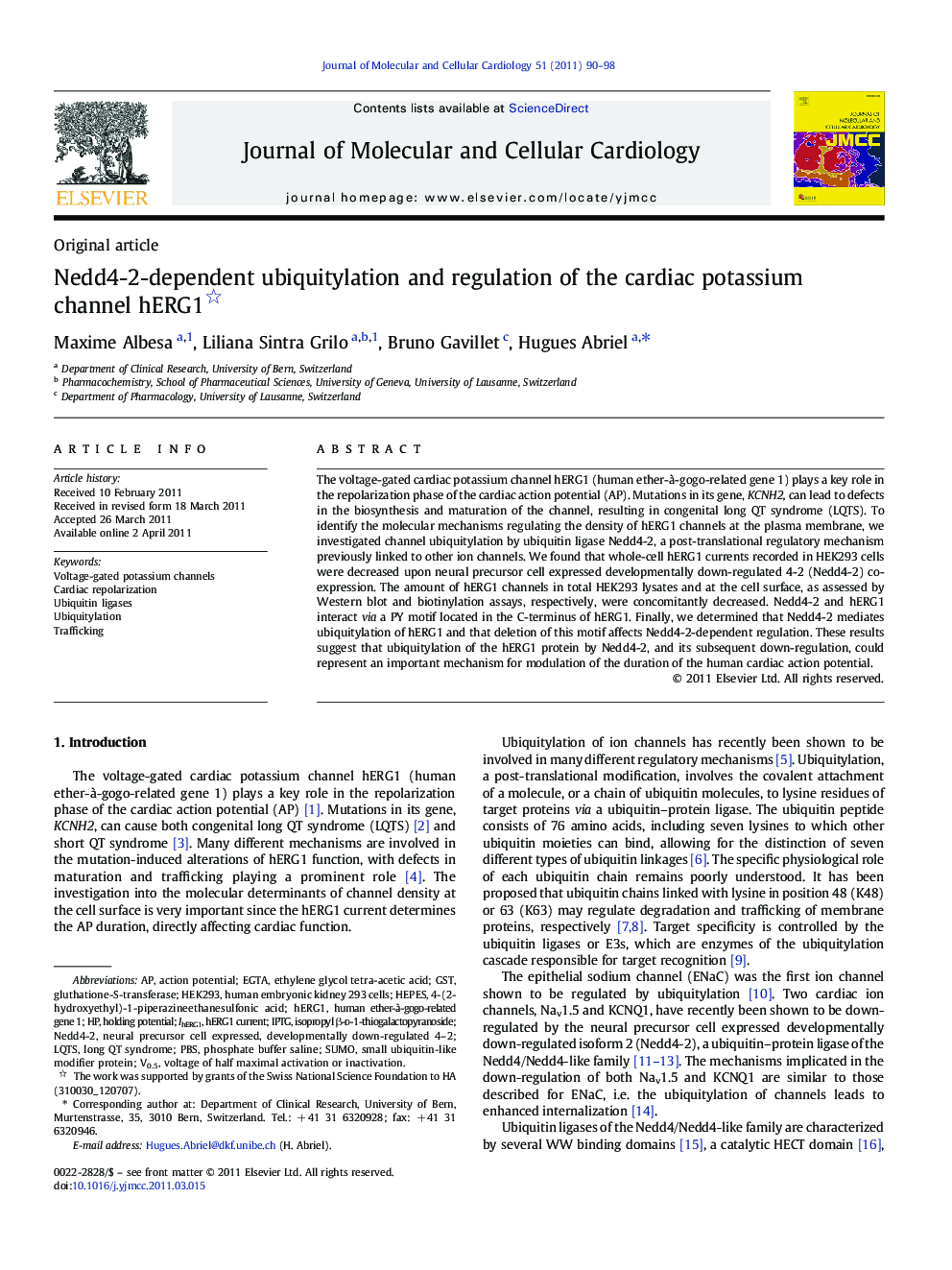| Article ID | Journal | Published Year | Pages | File Type |
|---|---|---|---|---|
| 2190778 | Journal of Molecular and Cellular Cardiology | 2011 | 9 Pages |
The voltage-gated cardiac potassium channel hERG1 (human ether-à-gogo-related gene 1) plays a key role in the repolarization phase of the cardiac action potential (AP). Mutations in its gene, KCNH2, can lead to defects in the biosynthesis and maturation of the channel, resulting in congenital long QT syndrome (LQTS). To identify the molecular mechanisms regulating the density of hERG1 channels at the plasma membrane, we investigated channel ubiquitylation by ubiquitin ligase Nedd4-2, a post-translational regulatory mechanism previously linked to other ion channels. We found that whole-cell hERG1 currents recorded in HEK293 cells were decreased upon neural precursor cell expressed developmentally down-regulated 4-2 (Nedd4-2) co-expression. The amount of hERG1 channels in total HEK293 lysates and at the cell surface, as assessed by Western blot and biotinylation assays, respectively, were concomitantly decreased. Nedd4-2 and hERG1 interact via a PY motif located in the C-terminus of hERG1. Finally, we determined that Nedd4-2 mediates ubiquitylation of hERG1 and that deletion of this motif affects Nedd4-2-dependent regulation. These results suggest that ubiquitylation of the hERG1 protein by Nedd4-2, and its subsequent down-regulation, could represent an important mechanism for modulation of the duration of the human cardiac action potential.
Research highlights► We look at the regulation of hERG1 by ubiquitin ligases of the Nedd4 family. ► We found that Nedd4-2 interacts with and ubiquitylates hERG1. ► hERG1 located at the cell surface is degraded upon Nedd4-2 interaction. ► Nedd4-2 promotes a decrease of the current density elicited by hERG1. ► hERG1's regulation by Nedd4-2 could be implicated in the cardiac repolarization.
